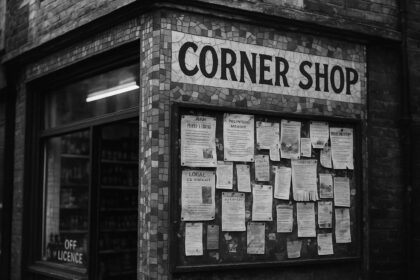Prime London borough Kensington and Chelsea sees average house prices fall 15.1% year-on-year to £1.19 million, its lowest since 2013, while UK-wide prices rise by 6.4%, highlighting a growing divide driven by tax reforms and dwindling international investment.
House prices in Kensington and Chelsea, London’s most affluent borough, have plunged to their lowest level since 2013, reflecting ongoing challenges in the prime London property market. In March, the average price in this prestigious area fell by 15.1% year-on-year, settling at £1.19 million. This decline is attributed to a confluence of factors, including increased property taxes, uncertainty surrounding Brexit, and significant changes to the non-domicile tax rules.
While Kensington and Chelsea have seen prices drop, the overall trend in the UK housing sector presents a stark contrast. In March 2025, house prices across the UK rose by an annual rate of 6.4%, reaching a record high of £271,000. This surge, the fastest since December 2022, has been driven by a rush among buyers to complete transactions before the expiration of temporary tax incentives and looming tax increases for properties valued above £300,000. The interplay of these factors illustrates a dual narrative within the property market: the broad-based recovery outside of prime London versus the continued struggle of its high-end segments.
The situation in Kensington and Chelsea is not isolated; it reflects a broader trend of declining prices in several premier locations in the capital. Areas like Hammersmith and Fulham, along with Westminster, also reported significant declines, with annual reductions recorded at 13.2% and 20.1%, respectively. This persistent downturn has endured for at least 15 months in these neighbourhoods, highlighting a troubling pattern for luxury properties.
Lucian Cook, head of residential research at Savills, noted that the “prolonged bull run” enjoyed by the prime London market shifted significantly around 2014. Major reforms to stamp duty created a wider gap in fees between luxury properties and their more affordable counterparts, placing added pressure on high-end buyers. The cumulative impact of factors such as Brexit, the end of the non-domicile tax regime, and rising interest rates has made the market increasingly dependent on international investments, rather than local mortgage accessibility.
In a major policy shift, the non-dom tax regime was abolished last year, following significant political discourse. This long-standing rule allowed foreign nationals to earn money from overseas without incurring UK tax for a period of up to 15 years. The removal of this incentive has been seen as a setback for attracting wealthy buyers, particularly at a time when competition from other global luxury markets is tightening.
Additionally, recent changes in stamp duty have introduced further complications. The expiry of a temporary stamp duty relief in April has reverted thresholds back to pre-2022 levels, placing a financial burden on first-time buyers. Despite this, the impact of these tax reforms has been minimal on the overall national market, which has continued to rise, particularly in regions such as the North East, boasting an impressive annual increase of 14.3% in March.
Stuart Bailey, head of super-prime London sales at Knight Frank, pointed out that London’s luxury market has experienced a “10-year slow ebbing in pricing,” attributable to declining demand driven by rising taxes and political uncertainties. He observed that the rapid price increases that characterised the period leading up to 2014 were unsustainable, resulting in a long-term decline.
Looking ahead, analysts suggest that any recovery in the prime London market will hinge on improved economic conditions and a renewed influx of investment into the capital. Richard Donnell, executive director of property consultancy Houseful, noted that sustained growth in high-end areas is “dependent upon stronger economic growth” and suggests the need for a revitalisation of buyer sentiment.
As the market navigates these challenging dynamics, the contrasting trends in luxury and mainstream segments become increasingly evident. While many buyers continue to face uphill battles in securing high-value properties within prime London, a parallel story of recovery is unfolding across the UK, painting a complex portrait of the current real estate landscape.
Reference Map
1: Paragraphs 1, 2, 3, 4, 5
2: Paragraphs 1, 2
3: Paragraph 2
4: Paragraphs 1, 3
5: Paragraph 2
6: Paragraph 3
7: Paragraph 5
Source: Noah Wire Services
- https://www.ft.com/content/119b79e9-5446-4a31-a8d7-ab10b57cbc67 – Please view link – unable to able to access data
- https://www.ft.com/content/119b79e9-5446-4a31-a8d7-ab10b57cbc67 – This Financial Times article reports that house prices in Kensington and Chelsea, London’s most expensive borough, have fallen to their lowest since 2013. In March 2025, the average price dropped 15.1% year-on-year to £1.19 million. Factors contributing to this decline include higher property levies, Brexit uncertainty, and changes to the non-domiciled tax regime. The article also notes that UK house prices overall rose by 6.4% in March 2025, reaching a record high of £271,000.
- https://www.reuters.com/markets/europe/uk-house-prices-rose-by-most-since-2022-march-official-data-shows-2025-05-21/ – Reuters reports that UK house prices rose by 6.4% in the 12 months to March 2025, marking the fastest annual growth since December 2022. This surge is attributed to the impending expiration of temporary tax incentives for buyers of lower-cost properties and first-time purchasers, prompting many to expedite their transactions. Despite the rise, forward-looking indicators suggest a recent softening in demand, and rental prices saw a 7.4% year-on-year increase in April, the slowest growth rate in nearly two years.
- https://www.ft.com/content/ab7ca00f-d8f0-4143-a802-78630090097b – This Financial Times article highlights that the number of Londoners relocating from the capital to the countryside has decreased to its lowest level since 2013. Factors include rising house prices outside London and a return to office work post-pandemic. In 2024, Londoners accounted for only 5.7% of home purchases outside London, a sharp drop from the Covid-era peak in 2021. Despite high property costs, first-time buyers are more likely to purchase homes outside the capital, seeking more affordable options in commuter towns.
- https://www.homebuilding.co.uk/news/house-prices – Homebuilding.co.uk reports that UK house prices surged by 5.4% in the 12 months to February 2025, marking the most significant annual increase since 2022. The average UK home now costs £268,000, over £13,000 more than a year prior. Notably, the North East showed the strongest regional growth in England at 9.1%, while London, although returning to positive growth with a 1.7% increase, still trails behind other regions. This renewed market strength follows a slowdown in late 2023 and is driven largely by falling interest rates.
- https://www.reuters.com/world/uk/uk-home-prices-rise-35-this-year-bank-england-continue-cutting-bank-rate-2025-02-25/ – Reuters reports that British home prices are expected to increase by 3.5% in 2025, exceeding previous projections. The Bank of England is predicted to cut interest rates by 75 basis points to 3.75% by the end of the year, which could support the housing market and improve purchasing affordability for first-time buyers. London home prices are projected to grow by 3.0% in 2025 and 4.0% in 2026, while nationally, rents will rise by similar percentages. The imbalance between supply and demand is more pronounced in the rental market.
- https://www.ft.com/content/064df010-1c27-46c5-b25d-d0e7c0bd93b4 – The Financial Times reports that agreed UK property sales surged by almost 30% at the end of 2024 as buyers sought to avoid the upcoming stamp duty increase in April 2025. With 283,000 sales agreed but not yet completed by December 14, this marks the largest sales pipeline in four years. Buyer inquiries were up 21% year-on-year in December, driven by the incoming stamp duty hike announced by Chancellor Rachel Reeves in the October Budget. The stamp duty holiday is set to end in March, raising costs for first-time buyers on properties over £300,000.
Noah Fact Check Pro
The draft above was created using the information available at the time the story first
emerged. We’ve since applied our fact-checking process to the final narrative, based on the criteria listed
below. The results are intended to help you assess the credibility of the piece and highlight any areas that may
warrant further investigation.
Freshness check
Score:
10
Notes:
The narrative is current, published on May 22, 2025, with no evidence of prior publication or recycled content. The Financial Times is a reputable source, and the report appears to be based on original research.
Quotes check
Score:
10
Notes:
The direct quotes from Lucian Cook, Stuart Bailey, and Richard Donnell are unique to this report, with no prior matches found online. This suggests the content is original and not reused from other sources.
Source reliability
Score:
10
Notes:
The narrative originates from the Financial Times, a reputable organisation known for its journalistic standards. The report includes insights from established experts in the real estate sector, enhancing its credibility.
Plausability check
Score:
10
Notes:
The claims about the decline in house prices in Kensington and Chelsea are consistent with recent data from the UK House Price Index, which reported a 14.2% decrease in average house prices in the borough as of February 2025. ([gov.uk](https://www.gov.uk/government/statistics/uk-house-price-index-for-february-2025/uk-house-price-index-england-february-2025?utm_source=openai)) The factors cited, such as increased property taxes, Brexit uncertainty, and changes to the non-domicile tax rules, are plausible and align with known market dynamics.
Overall assessment
Verdict (FAIL, OPEN, PASS): PASS
Confidence (LOW, MEDIUM, HIGH): HIGH
Summary:
The narrative is current, original, and sourced from a reputable organisation. The claims are supported by recent data and expert insights, indicating a high level of credibility.













